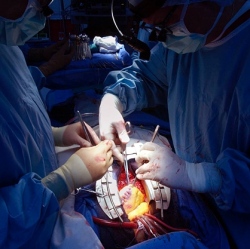
An additive nanoparticle manufacturing process has been used to design and realize a synthetic platelet for the first time. The platelets are “super mimics”, matching the natural shape, size, flexibility, and surface biochemistry of real platelets unlike prior incarnations that match only one or two qualities.
The synthetic platelets were applied in an animal model of bleeding to induce clots and halt bleeding three times faster than the natural rate, at the same time cutting down on indiscriminate and harmful formation of clots at other, irrelevant sites. Moreover, the synthetic platelets are imagined to have an additional use: delivery of therapeutics to deep areas of the vasculature where conventional medications will not be able to reach.
In animal experiments, the synthetic platelets were introduced into the blood stream after injury to the tail of the model animal, mice. The platelets circulated broadly and then settled on the site of physical insult. In the animals that received the synthetic platelets with the biological mimic of the surface, the accumulation of platelets was three times higher than without for synthetic platelets with unmodified surfaces, accompanied by the same accelerated stopping of bleeding.
The synthetic plates are made by a layer-wise build-up of synthetic polymers and biological proteins, some of which include polystyrene, polyallylamine hydrochloride, and bovine serum protein (a generic protein). The surfaces are conjugated to natural clotting factors such as von Willebrand Factor binding peptide, and fibrinogen-mimetic peptide. The new nanoparticle-derived synthetic platelets have a natural, flexible “discoid” shape rather than a rigid spherical shape that overcame the margination problem.
Nanoparticles have been developed previously for solving the same challenges but thus far have been hampered by deficiencies such as poor circulation in the blood stream, poor margination (the migration from central bloodstream to extremities), and poor targeting. They did however show some efficacy, for example, but speeding up blood clotting by a factor of two.
